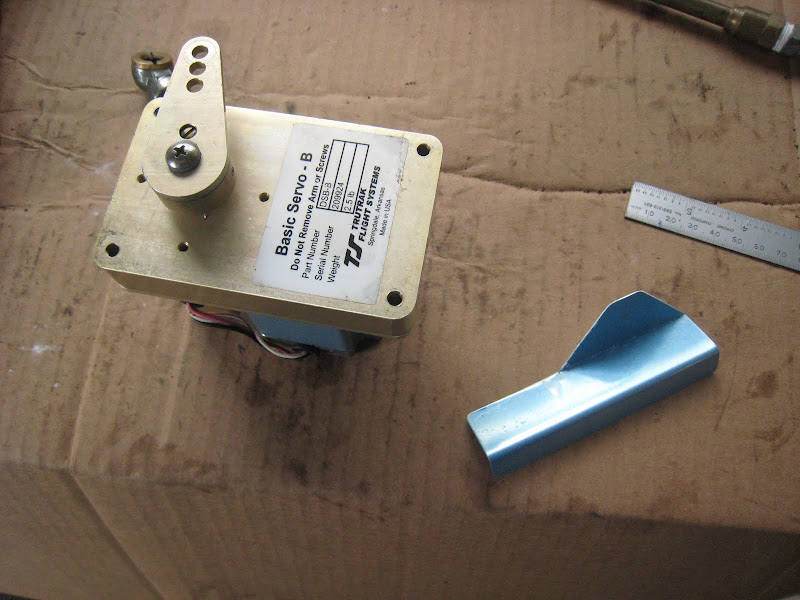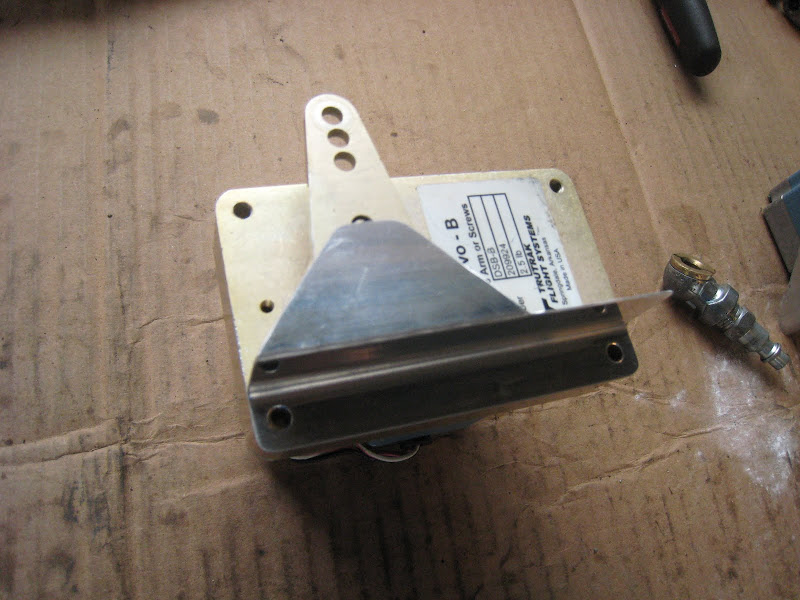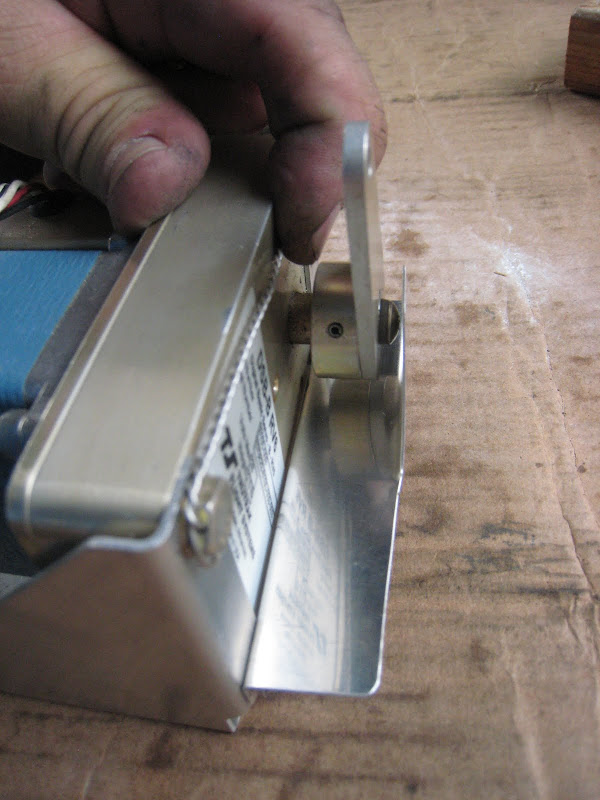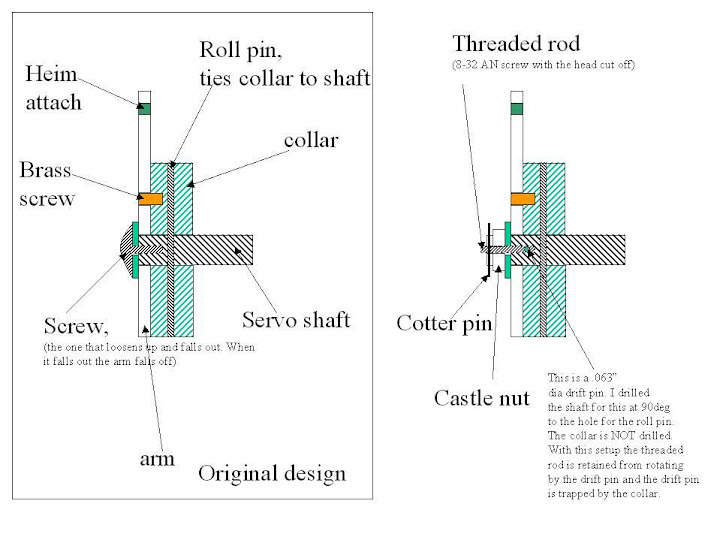Last year, Tru Trak issued a Service bulletin and provided replacement screws due to some instances of the screw that holds the servo arm to the output shaft backing out. There was at least one report here on VAF of a servo arm falling off of the pitch servo, and causing a jammed elevator during a loop ? a situation handled with extreme professionalism by the pilot who saved the craft and brought the story back. The new screws supplied by Tru Trak had a daub of blue locktite on them, and were supposed to fix the problem.
We put the new screws on both servos in both of our airplanes as soon as they were available, and felt happy that we had addressed the problem. But during those last week?s annual on the RV-6, we found the roll servo screw backed out about half way, and the pitch servo screw slightly loose. A hangar discussion with neighbors and mechanics brought up no new ideas for keeping the screw in place (other than more locktite), but did bring to light a guard that our F-1 owning neighbor had fabricated to keep the arm on the servo in the case that the screw did back out ? a nice set of ?suspenders? to back up the ?belt?. This was very much in line with my philosophy that any potential failure WILL happen, so you better have a backup plan.
As an engineer, I am always aware of the potential for unintended consequences when making a modification, so it took me a couple of hours to convince myself that this guard has no reasonable downside. As was pointed out last year during discussions of this issue, it is important that the arm not be secured so securely to the output shaft that the shear pin cannot perform its function. The design is such that if the servo were to ?run away?, the pilot can exert enough force to shear the pin, causing the output shaft to freewheel independent of the arm, preventing jammed controls. This ?new? guard (my neighbor gives credit for the design to Blue Mountain, who had it on their servos which he had until his recent conversion to GRT/TT equipment) will keep the arm from backing off the shaft if the screw gets loose, and I can?t see a reasonable way in which it could jam the controls. This certainly doesn't negate the need for careful inspection, but makes us feel better between Annuals.
Fabricated out of some scrap .025 Alclad, the brackets are basically ?Z?-sections with a web of 7/8? and the little pyramid cut to cover the output shaft area. Full throw of the controls with the servo and guard installed was tested after installation, and nothing even comes close to interfering or binding. Adding the guard does add one potential ara where FOD could hide ? but there are already other places where this could happen in the RV without servos at all ? so keep loose stuff out from underneath your floorboards.
Pictures are worth much more than my words on how to build them:



Paul
We put the new screws on both servos in both of our airplanes as soon as they were available, and felt happy that we had addressed the problem. But during those last week?s annual on the RV-6, we found the roll servo screw backed out about half way, and the pitch servo screw slightly loose. A hangar discussion with neighbors and mechanics brought up no new ideas for keeping the screw in place (other than more locktite), but did bring to light a guard that our F-1 owning neighbor had fabricated to keep the arm on the servo in the case that the screw did back out ? a nice set of ?suspenders? to back up the ?belt?. This was very much in line with my philosophy that any potential failure WILL happen, so you better have a backup plan.
As an engineer, I am always aware of the potential for unintended consequences when making a modification, so it took me a couple of hours to convince myself that this guard has no reasonable downside. As was pointed out last year during discussions of this issue, it is important that the arm not be secured so securely to the output shaft that the shear pin cannot perform its function. The design is such that if the servo were to ?run away?, the pilot can exert enough force to shear the pin, causing the output shaft to freewheel independent of the arm, preventing jammed controls. This ?new? guard (my neighbor gives credit for the design to Blue Mountain, who had it on their servos which he had until his recent conversion to GRT/TT equipment) will keep the arm from backing off the shaft if the screw gets loose, and I can?t see a reasonable way in which it could jam the controls. This certainly doesn't negate the need for careful inspection, but makes us feel better between Annuals.
Fabricated out of some scrap .025 Alclad, the brackets are basically ?Z?-sections with a web of 7/8? and the little pyramid cut to cover the output shaft area. Full throw of the controls with the servo and guard installed was tested after installation, and nothing even comes close to interfering or binding. Adding the guard does add one potential ara where FOD could hide ? but there are already other places where this could happen in the RV without servos at all ? so keep loose stuff out from underneath your floorboards.
Pictures are worth much more than my words on how to build them:
Paul





